-
Executive Summary
-
Market Introduction
-
Market Definition
-
Scope of the
- Research
- Assumptions & Limitations
-
Study
-
Objectives
-
Markets Structure
-
Key Takeaways
-
Market Research Methodology
-
Research Process
-
Primary Research
-
Secondary Research
-
Market Size Estimation
-
Forecast Model
-
Market Dynamics of the Global Inorganic
-
Rheology Modifiers Market
-
Introduction
-
Drivers
-
Restraints
-
Opportunities
-
Challenges
-
Trends/Technology
-
Market Factor Analysis of the
-
Global Inorganic Rheology Modifiers Market
-
Supply Chain Analysis
-
Porter’s Five Forces Analysis
-
Threat of New Entrants
-
Power of Buyers
-
of Suppliers
-
Pricing Analysis
-
Raw Material Suppliers
-
Manufacturers/Producers
-
Distributors/Retailers/Wholesalers/E-Commerce
-
End User
-
Bargaining
-
Bargaining Power
-
Threat of Substitutes
-
Intensity of Competitive Rivalry
-
Global Inorganic Rheology Modifiers
-
Market, by Type
-
Introduction
-
Clay
- Market Estimates
- Market Estimates & Forecast,
-
& Forecast, 2020−2027
-
by Region, 2020−2027
-
Fumed Silica
- Market Estimates & Forecast,
- Market Estimates & Forecast, by Region, 2020−2027
-
Specialty Clays
- Market Estimates & Forecast, 2020−2027
-
Market Estimates & Forecast, by Region, 2020−2027
-
Global Inorganic Rheology Modifiers Market, by End-Use Industry
-
Introduction
-
Paints & Coatings
- Market Estimates
-
Market Estimates & Forecast, 2020−2027
-
& Forecast, by Region, 2020−2027
-
Personal Care
- Market Estimates & Forecast, 2020−2027
- Market Estimates & Forecast, by Region, 2020−2027
- Market Estimates & Forecast,
- Market Estimates & Forecast, by Region, 2020−2027
-
& Cosmetics
-
Adhesives & Sealants
-
Others
- Market Estimates & Forecast,
- Market Estimates & Forecast, by Region, 2020−2027
-
Global Inorganic Rheology Modifiers Market, by Region
-
Introduction
-
North America
- Market Estimates & Forecast, 2020−2027
- Market Estimates & Forecast, by Type, 2020−2027
- Market Estimates & Forecast, by End-Use Industry, 2020−2027
- US
-
Market Estimates & Forecast, 2020−2027
-
Market Estimates & Forecast, End-Use Industry, 2020−2027
-
Canada
-
Market Estimates & Forecast, 2020−2027
-
Market Estimates & Forecast, by End-Use Industry, 2020−2027
-
Europe
-
Industry, 2020−2027
-
Forecast, 2020−2027
-
Forecast, by End-Use Industry, 2020−2027
-
France
-
Estimates & Forecast, 2020−2027
-
& Forecast, by End-Use Industry, 2020−2027
-
Italy
-
Estimates & Forecast, 2020−2027
-
& Forecast, by End-Use Industry, 2020−2027
-
Spain
-
Estimates & Forecast, 2020−2027
-
& Forecast, by End-Use Industry, 2020−2027
-
UK
-
& Forecast, 2020−2027
-
Forecast, by End-Use Industry, 2020−2027
-
Russia
-
Estimates & Forecast, 2020−2027
-
& Forecast, by End-Use Industry, 2020−2027
-
& Forecast, 2020−2027
-
Forecast, by End-Use Industry, 2020−2027
-
of Europe
-
Market Estimates & Forecast, 2020−2027
-
Market Estimates & Forecast,
-
Market Estimates & Forecast, by Type,
-
Market Estimates & Forecast, by End-Use
-
Germany
-
Market Estimates &
-
Market Estimates & Forecast, by Type, 2020−2027
-
Market Estimates &
-
Market
-
Market Estimates & Forecast, by Type, 2020−2027
-
Market Estimates
-
Market
-
Market Estimates & Forecast, by Type, 2020−2027
-
Market Estimates
-
Market
-
Market Estimates & Forecast, by Type,2020−2027
-
Market Estimates
-
Market Estimates
-
Market Estimates & Forecast, by Type,2020−2027
-
Market Estimates &
-
Market
-
Market Estimates & Forecast, by Type,2020−2027
-
Market Estimates
-
Poland
-
Market Estimates
-
Market Estimates & Forecast, by Type, 2020−2027
-
Market Estimates &
-
Rest
-
Market Estimates & Forecast, by Type,
-
Market Estimates & Forecast, by End-Use Industry, 2020−2027
-
Asia-Pacific
- Market Estimates &
- Market Estimates & Forecast,
- Market Estimates & Forecast,
- China
-
Forecast, 2020−2027
-
by Type, 2020−2027
-
by End-Use Industry, 2020−2027
-
& Forecast, 2020−2027
-
& Forecast, by End-Use Industry, 2020−2027
-
India
-
Market Estimates & Forecast, 2020−2027
-
by Type, 2020−2027
-
Market Estimates & Forecast, by End-Use Industry, 2020−2027
-
& Forecast, by Type, 2020−2027
-
& Forecast, 2020−2027
-
& Forecast, by End-Use Industry, 2020−2027
-
Rest of Asia-Pacific
-
Market Estimates & Forecast, 2020−2027
-
by Type, 2020−2027
-
Japan
-
Market Estimates & Forecast, 2020−2027
-
Market Estimates
-
Market Estimates & Forecast, by End-Use Industry,
-
Australia & New Zealand
-
Market Estimates
-
Market Estimates & Forecast, by Type, 2020−2027
-
Market Estimates
-
Market Estimates & Forecast,
-
Market Estimates & Forecast, by End-Use Industry, 2020−2027
-
Middle East
- Market Estimates & Forecast,
- Market Estimates & Forecast, by Type,
- Market Estimates & Forecast, by End-Use
- GCC
- Israel
- North Africa
-
& Africa
-
Industry, 2020−2027
-
& Forecast, by Type, 2020−2027
-
& Forecast, by Type, 2020−2027
-
Market Estimates & Forecast, by Type, 2020−2027
-
Industry, 2020−2027
-
Forecast, 2020−2027
-
Forecast, by End-Use Industry, 2020−2027
-
of Middle East & Africa
-
Forecast, by Type, 2020−2027
-
Forecast, 2020−2027
-
by Type, 2020−2027
-
by End-Use Industry, 2020−2027
-
& Forecast, 2020−2027
-
Forecast, by End-Use Industry, 2020−2027
-
Argentina
-
Market Estimates & Forecast, 2020−2027
-
& Forecast, by End-Use Industry, 2020−2027
-
Mexico
-
Market Estimates & Forecast, 2020−2027
-
& Forecast, by End-Use Industry, 2020−2027
-
Rest of Latin America
-
by Type, 2020−2027
-
Market Estimates & Forecast, by End-Use
-
Turkey
-
Market Estimates &
-
Market Estimates & Forecast, by Type, 2020−2027
-
Market Estimates &
-
Rest
-
Market Estimates & Forecast, 2020−2027
-
Market Estimates &
-
Market Estimates & Forecast, by End-Use Industry, 2020−2027
-
Latin America
- Market Estimates &
- Market Estimates & Forecast,
- Market Estimates & Forecast,
- Brazil
-
Market Estimates & Forecast, by End-Use Industry, 2020−2027
-
Company Landscape
-
Introduction
-
Market Key Strategies
-
Key Development Analysis (Expansion/Merger & Acquisitions/Joint
-
Venture/New Product Development/Agreement/Investment)
-
Company Profiles
-
BASF SE
- Financial Updates
- Product/Business Segment Overview
- Key Strategies
- SWOT Analysis
-
Company Overview
-
Key Developments
-
Evonik Industries AG
- Financial Updates
- Product/Business Segment Overview
- Key Strategies
- SWOT Analysis
-
Company Overview
-
Key Developments
-
Cabot Corporation
- Company Overview
- Key
- Key Developments
-
Financial Updates
-
Product/Business Segment Overview
-
Strategies
-
SWOT Analysis
-
ALTANA
- Company Overview
- Financial Updates
- Key Developments
- SWOT Analysis
-
Product/Business Segment Overview
-
Key Strategies
-
Wacker
- Financial Updates
- Product/Business Segment Overview
- Key Strategies
- SWOT Analysis
-
Chemie AG
-
Company Overview
-
Key Developments
-
XUNYU CHEM
- Company Overview
- Key
- Key Developments
-
Financial Updates
-
Product/Business Segment Overview
-
Strategies
-
SWOT Analysis
-
Orisil
- Company
- Financial Updates
- Product/Business Segment Overview
- Key Developments
- SWOT Analysis
-
Overview
-
Key Strategies
-
OCI
- Financial Updates
- Product/Business Segment Overview
- Key Strategies
- SWOT Analysis
-
COMPANY Ltd
-
Company Overview
-
Key Developments
-
Tokuyama Corporation
- Financial Updates
- Product/Business Segment Overview
- Key Strategies
- SWOT Analysis
-
Company Overview
-
Key Developments
-
Conclusion
-
LIST OF TABLES
-
Global Inorganic Rheology Modifiers Market, by Region,
-
North America: Inorganic Rheology
-
Modifiers Market, by Country, 2020−2027
-
Europe:
-
Inorganic Rheology Modifiers Market, by Country, 2020−2027
-
Table 4
-
Asia-Pacific: Inorganic Rheology Modifiers Market, by Country, 2020−2027
-
Middle East & Africa: Inorganic Rheology Modifiers
-
Market, by Country, 2020−2027
-
Latin America:
-
Inorganic Rheology Modifiers Market, by Country, 2020−2027
-
Table 7
-
Global Inorganic Rheology Modifiers Type Market, by Regions, 2020−2027
-
North America: Inorganic Rheology Modifiers Type Market,
-
by Country, 2020−2027
-
Europe: Inorganic Rheology
-
Modifiers Type Market, by Country, 2020−2027
-
Table10 Asia-Pacific:
-
Inorganic Rheology Modifiers Type Market, by Country, 2020−2027
-
Table11
-
Middle East & Africa: Inorganic Rheology Modifiers Type Market, by Country,
-
Table12 Latin America: Inorganic Rheology
-
Modifiers Type Market, by Country, 2020−2027
-
Table13 Global
-
Inorganic Rheology Modifiers End-Use Industry Market, by Regions, 2020−2027
-
Table14 North America: Inorganic Rheology Modifiers End-Use
-
Industry Market, by Country, 2020−2027
-
Table15 Europe:
-
Inorganic Rheology Modifiers End-Use Industry Market, by Country, 2020−2027
-
Table16 Asia-Pacific: Inorganic Rheology Modifiers End-Use Industry
-
Market, by Country, 2020−2027
-
Table17 Middle East &
-
Africa: Inorganic Rheology Modifiers End-Use Industry Market, by Country, 2020−2027
-
Table18 Latin America: Inorganic Rheology Modifiers by End-Use
-
Industry Market, by Country, 2020-2025
-
Table19 Global
-
Type Market, by Region, 2020−2027
-
Table20 Global End-Use
-
Industry Market, by Region, 2020−2027
-
Table21 North
-
America: Inorganic Rheology Modifiers Market, by Country, 2020−2027
-
Table22 North America: Inorganic Rheology Modifiers Market,
-
by Type, 2020−2027
-
Table23 North America: Inorganic
-
Rheology Modifiers Market, by End-Use Industry, 2020−2027
-
Table24
-
Europe: Inorganic Rheology Modifiers Market, by Country, 2020−2027
-
Table25 Europe: Inorganic Rheology Modifiers Market, by Type,
-
Table26 Europe: Inorganic Rheology
-
Modifiers Market, by End-Use Industry, 2020−2027
-
Table27
-
Asia-Pacific: Inorganic Rheology Modifiers Market, by Country, 2020−2027
-
Table28 Asia-Pacific: Inorganic Rheology Modifiers
-
Market, by Type, 2020−2027
-
Table29 Asia-Pacific: Inorganic
-
Rheology Modifiers Market, by End-Use Industry, 2020−2027
-
Table30
-
Middle East & Africa: Inorganic Rheology Modifiers Market, by Country,
-
Table31 Middle East & Africa: Inorganic
-
Rheology Modifiers Market, by Type, 2020−2027
-
Table32
-
Middle East & Africa: Inorganic Rheology Modifiers Market, by End-Use
-
Industry, 2020−2027
-
Table33 Latin America: Inorganic
-
Rheology Modifiers Market, by Country, 2020−2027
-
Table34
-
Latin America: Inorganic Rheology Modifiers Market, by Type, 2020−2027
-
Table35 Latin America: Inorganic Rheology Modifiers Market,
-
by End-Use Industry, 2020−2027
-
LIST OF FIGURES
-
Global Inorganic Rheology Modifiers Market Segmentation
-
Forecast Research Methodology
-
FIGURE 3
-
Five Forces Analysis of the Global Inorganic Rheology Modifiers Market
-
FIGURE
-
Value Chain of the Global Inorganic Rheology Modifiers Market
-
Global Inorganic Rheology Modifiers Market, 2020−2027,
-
by Country, 2020
-
Share of the Global Inorganic Rheology
-
Modifiers Market, by Type, 2020−2027
-
Global Inorganic
-
Rheology Modifiers Market Size, by Type, 2020
-
Share of
-
the Global Inorganic Rheology Modifiers Market, by Type, 2020−2027
-
FIGURE
-
Global Inorganic Rheology Modifiers Market Size, by End-Use Industry,
-
FIGURE10 Share of the Global Inorganic Rheology Modifiers Market,
-
by End-Use Industry, 2020−2027


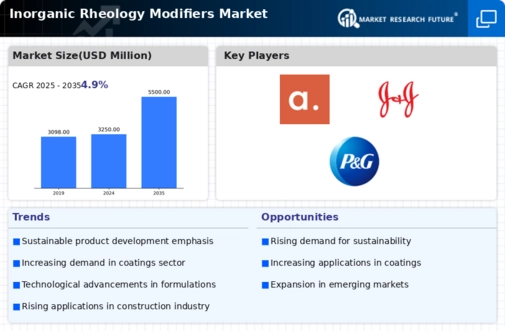
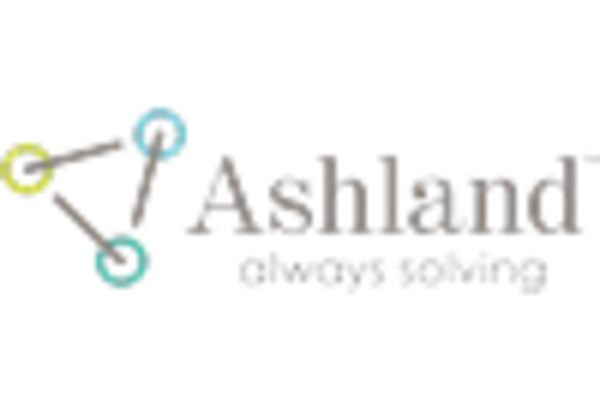

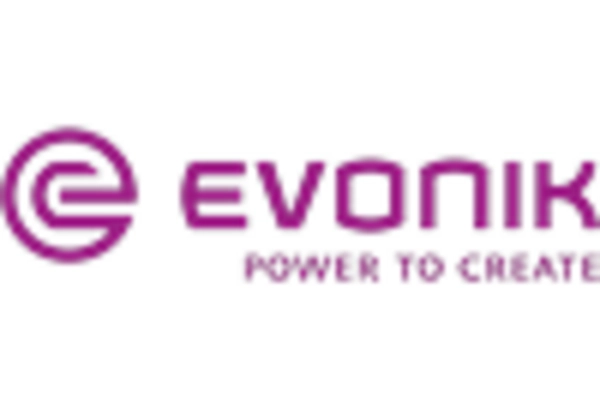

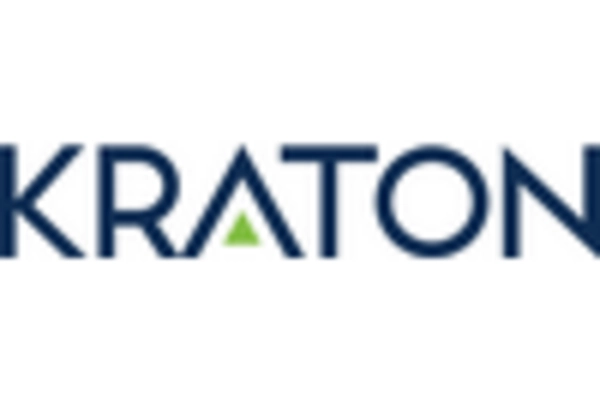
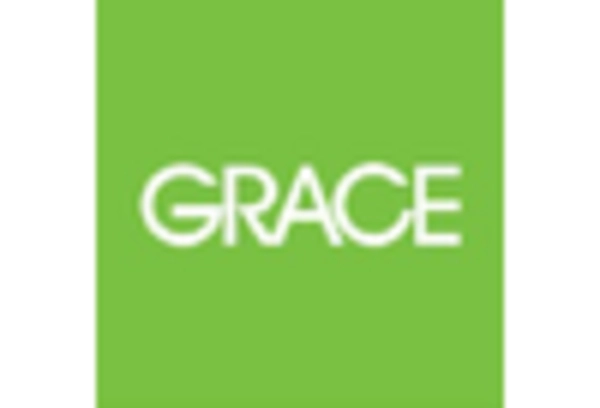









Leave a Comment